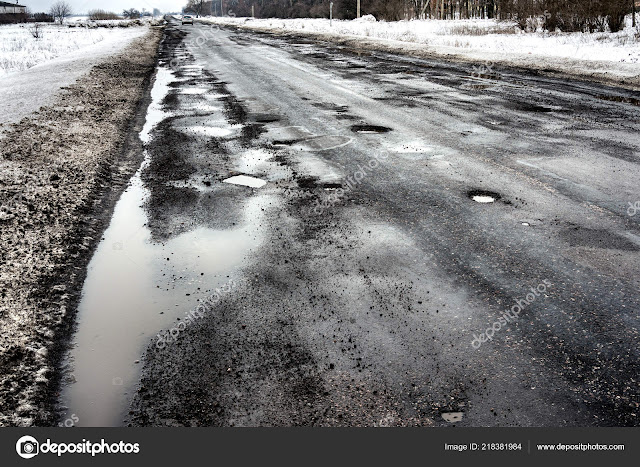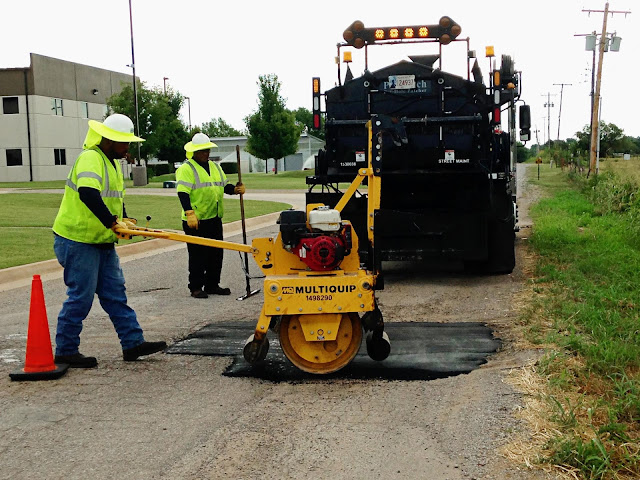If you consider it, paving is a luxury. The roads are always close by, but not always safe, comfortable, or able to support the many and heavy vehicles that use our current road network every day.
No matter
how many roads dominate the landscape, you will be amazed that in most parts of
the modern world, anyone can hop on a bus, car, bicycle, truck, motorbike or
scooter and get to almost anywhere with relative ease. and comfort. Indeed,
roads make travel so comfortable that their shortcomings - or when they break
down - are a major source of frustration. There are times when driving doesn't
feel luxurious and we've all experienced one or two of them. Today we are talking about holes.
practical technique
I remember the joy of taking my first car as a teenager and finally getting to drive it. It is sad to say that this is perhaps the greatest joy driving a vehicle has ever given me. It's a little boring. And I hope I disagree with that, but I think that driving is a bit boring for most people. This is what we do between where we are and where we try. I don't know about you, but I don't wake up in the morning wanting to jump in the car for my morning commute. Driving is commonplace for most of us. But the only reason we can do this - being so indifferent to car travel - is because roads are so well designed and built.
There are many ways to build roads. From
yellow bricks to arches to plain earth and water, the combinations of materials
and construction techniques are almost limitless. Yet there is one design
around the world that fills most of our paths. It consists of one or more
layers of corner rock called a base layer, and then a layer of asphalt concrete
(also known as black roof or asphalt). It turns out that this design strikes
the perfect balance between profitability and a smooth, durable road surface.
However, paved roads are unbeatable, and run into some common problems,
including potholes.
The hole formation occurs gradually. And
the first step of that step is surface degradation. Asphalt rejects many
offenses. If you are exposed to continuous limited traffic in addition to
strong sunshine, rain, snow, sleet and cold weather, any material, no matter
how heavy, will wear out. If this happens to the asphalt, the first sign will
be cracking. They may appear harmless, but cracks are a drawback of the
pavement system. Why? Because they release water. And don't let him go, let him
come back. A hole is a lack of substance or material. It is the only thing that
gets bigger the more you take on. If you started out without holes and now you
have them, this material will have to be carried somewhere. In the case of
pits, the material is the soil beneath the road (called subsurface) and where
it goes has to do with water.
It's a slow process at first, but any small bearings that erode under the curb means less support, and less support means more free volume under the curb so water can be pumped out of traffic. This in turn leads to more positive feedback erosion. In the end the pavement loses enough grip to fail, break, and collapse, and you have a hole in it.
Of course, this whole process got worse in cold weather. Water expands with great force when it freezes. The thin layer of water between the pavement and the ground freezes and grows into formations called lenses. When this lens melts, all the ice that supports the pavement disappears and a void is created. In addition, the subsoil remains frozen, trapping melted water between the pavement and subsoil and accelerating erosion. Holes are everywhere in the pavement, but worse in cold climates and much worse in the spring when the soil starts to thaw.
They're annoying, yes, but they're not the
only ones. Holes cause billions of damage to tires, impact and wheels. Even
worse, they are dangerous. Cars sometimes have to be missed at high speed, and
if a motorbike, motorbike or scooter hits them it could be bad news. So, road
owners spend a lot of time and money fixing them. There are different types of
correction holes depending on the material, price, and climatic conditions. But
they mostly do the same thing: they replace lost soil and sidewalks, and
(hopefully) close the area from further water ingress. This second part is
obviously critical, but much more difficult to implement. Fixing holes,
however, is a bandage and doesn't always create the perfect connection with the
rest of the curb. Hence, the holes seem to be repeatedly in the same place even
after repair.
Once we understand how these annoying and sometimes dangerous flaws occur, the next logical question is how to prevent them first. Of course, we can build roads from stronger, more durable materials. Many highways are paved with concrete for this reason. However, the course is unusual because small changes in design have a significant overall cost impact. Choosing pavement that is only an inch thick can mean millions of tons of extra asphalt because those inches are multiplied by a very large area. That's why we balance the cost of a genuine floor with the cost of maintaining it over its lifetime. For asphalt pavements, this treatment mainly means closing cracks to prevent water ingress. If you can do this regularly, you can extend the life of the asphalt pavement by years.
Since roads are fundamentally public
infrastructure, their condition reflects (at least in part) the importance that
we all pay attention to car traffic. In the broadest and most general sense, we
choose potholes by determining how much tax to pay, how much tax we want to
budget for the road, and how big and how many vehicles we drive. Pavement is
one of the most valuable assets of a city, district, or DOT. This is important
and expensive, which means there is a whole industry of how roads can be
designed, built and maintained as safely and cheaply as possible. Politicians,
civil servants, engineers, and contractors move on the same roads as everyone
else, so they all have a vested interest in keeping the road as pothole-free as
possible so that we can all enjoy the luxury of driving on paved roads for
safety and comfort. Thanks for reading and let me know what you think!




Post a Comment
Post a Comment